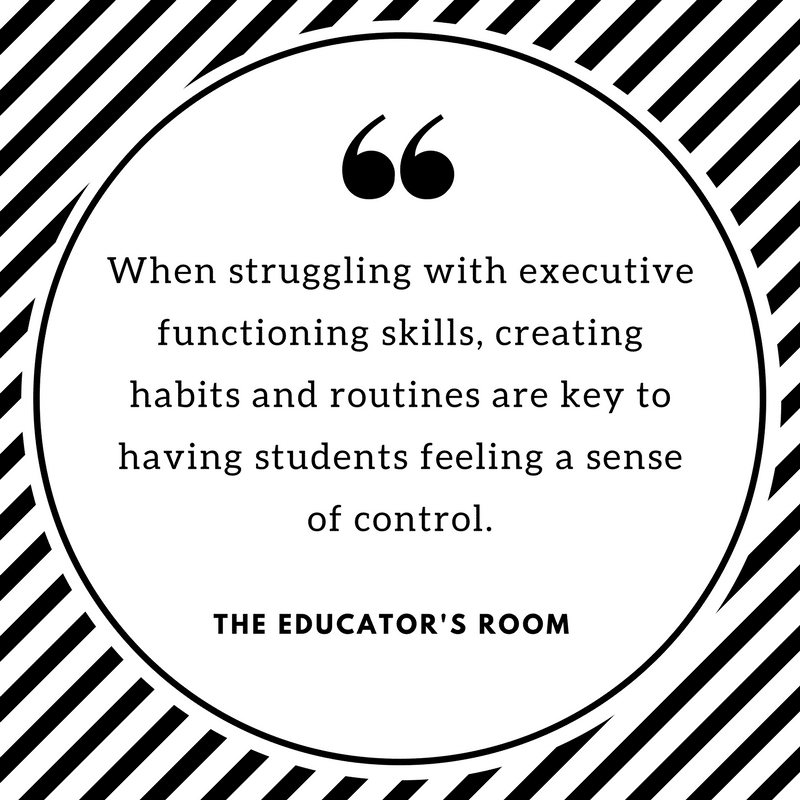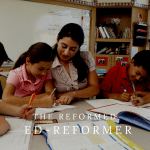“Executive Functioning Skills. Executive Function. What is that and what does it have to do with my classroom?” These are the questions I asked myself walking into the New Jersey LDT-C Fall Symposium in 2016. Cindy Goldrich, a board Certified ADHD coach, gave us an extremely in-depth look at what executive functioning skills were and why they were so important not only in the classroom but in our student’s lives; especially our special education students lives.
According to LD Online, Executive Function is defined as, “…a set of processes that all have to do with managing oneself and one’s resources in order to achieve a goal. It is an umbrella term for the neurologically-based skills involving mental control and self-regulation.” Mental control and self-regulation- that is something that not only do children struggle with, but many adults still struggle with how to manage. That goes into time management, regulation of emotions, and organization. These are functions that follow a person throughout his entire life, changing and morphing, especially during those school-aged years. But how does one improve his executive functioning skills and how does a teacher possibly squeeze in teaching these skills among everything else they have to teach?
Many executive functioning skills that can be incorporated into the classroom are something that many teachers already do, but it’s best to be mindful of them, and to vocalize precisely that skill, so students can also become mindful of them. Becoming mindful is the foundation to improving executive functioning skills, once a person is mindful of his actions, that is when the skills can be learned, practiced and seamlessly assimilated in one’s life.
Students with ADHD have difficulty truly understanding the concept of time. Sure, you say they have five minutes to get unpacked and sit at their desk, but what does five minutes really feel like? You say they have a project due in two weeks, but how close is two weeks really? That’s when tools like timers, calendars, checklists and visual due dates are important. If students have five minutes for a task, google “5 minute time” (this works for any minute you would like) and display that on the board so students can see just how long they have, and how quickly five minutes really goes! If students have a project, starting can be overwhelming, so checklists help students really understand how much time and effort goes into it. But be careful, don’t kill yourself making checklists for students, have them make the checklists so you are giving them the tools for success.
Processing speed and working memory also takes a hit when students are under pressure or anxiety; something to relieve the anxiety is again creating a list of what needs to be done. Students can make this on their own if they are more independent, or they can do it in partners or as a class. The more students experience and understand the benefits for the list, the closer they become to doing it independently.
When struggling with executive functioning skills, creating habits and routines are key to having students feeling a sense of control. At the beginning of class, what are your expectations as the teacher? To have a pencil out and sitting down in the correct seat? Say that, post that, start it at the beginning of the year! Now is the perfect time to begin thinking about what we as teachers want as habits in our classrooms. Have visuals of those expected behaviors so students can get into the routine of what is expected every day. But don’t end it with the beginning of class, what about the end? Write down homework, with a pencil, in your planner or phone, put it in the same spot every day. While this seems repetitive and maybe unnecessary, we as teachers sometimes forget that students with disabilities are affected in more areas than simply content.
Frustrations with unorganized students can reach an all time high on the right day, and placing the blame on immaturity, gender, motivation, character or even bad parenting can seem like the go to place when venting. However, it’s important for us to also be mindful and think that those are rarely the reason for students lack of success. Let us step out of that content driven black hole and remember to teach kids how to learn in combination with what to learn.








great points!